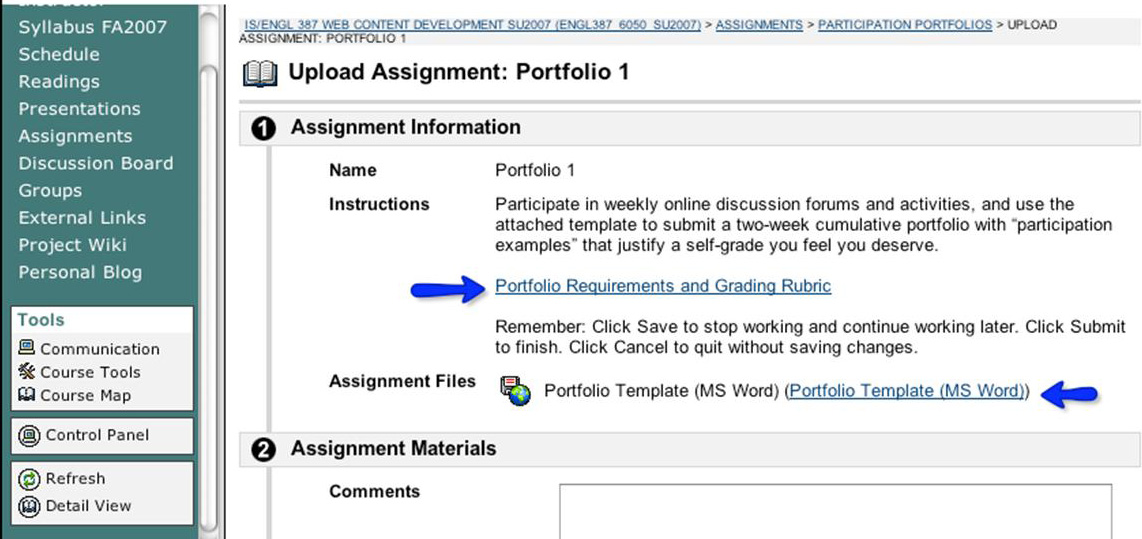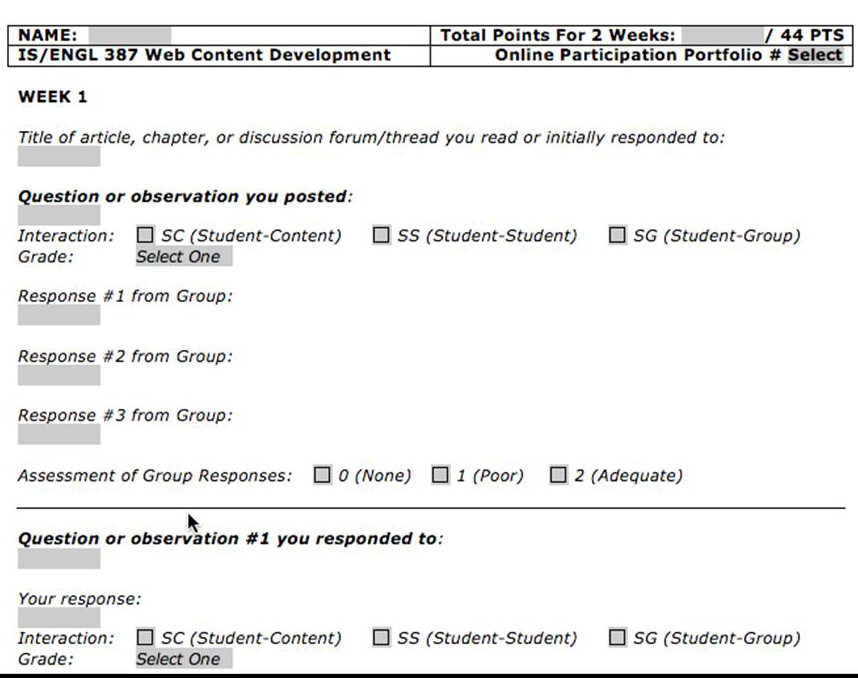At Educause Learning Initiative Conference 2009, John Fritz, University of Maryland, Baltimore County presented “Managing Online Discussions with a Participation Portfolio”.
As an instructor using online discussions, how do you avoid initiating every thread or simply counting all replies (including “I agree” posts)? Or, if you are trying to grade quality of posts, it can be tedious to find the posts, and grading may be subjective and difficult to justify. One way to streamline grading is to create rubrics for discussion posts (see description in previous post). John Fritz takes this one step further: he uses a rubric, and requires students to submit an online “participation portfolio” of their best work, with student’s own rating of their work. He’s found that students take responsibility for discussions and reduce the assessment burden.
Steps for online discussion grading:
- The instructor defines a grading rubric for good posts and replies (this is the hardest step for instructors, see previous post for help).
- Instructor posts this rubric in an assignment in Blackboard for the students, and provides a template for a student portfolio (for the students to download and complete). (See the blue arrows in the picture)

- Students propose a grade they feel they deserve, based on 3 to 5 examples of their discussion posts and replies. The student examples must be taken from separate weeks to avoid end of semester “dog pile”. Students copy and paste examples into a portfolio and submit this portfolio electronically (using an “assignment” in Blackboard). The portfolio template is below. Students fill in the gray boxes, some of which are drop-down choices, based on the rubric.
 Instructor can accept, raise or lower the student grade based on the student examples and the rubric.
Instructor can accept, raise or lower the student grade based on the student examples and the rubric.
In Fritz’s experience, most students grade their participation harder than he does. He does participate in the online discussions, to model participation. He responds to student posts, and because his rubric counts student responses to posts, his responses can be included in the student portfolio. He does not read every post, and does not have to grade every post. From following the discussions, he already has a sense of how the students are doing before they hand in their portfolios, so he can scan the grades students have assigned. He finds that the biggest problem is that students don’t take the discussion seriously the first time, so he repeats this assignment three times during the semester. Each discussion is for a fixed duration. Because students must leave time for replies to their posts (replies count in the rubric), students become more proactive and do not put off the assignment. It’s also easier for him to mange one discussion at a time, than several discussions concurrently.
Another faculty member uses online discussion to engage students in reading primary literature. He assigns students to read a paper, then post a question about the paper in the discussion board, and elicit responses as well as respond to other student questions. This assignment engages students in literature outside of class, and provides forum for discussion.
